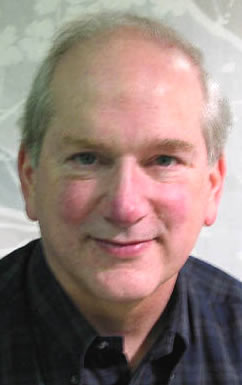
http://www.umn.edu/urelate
612-624-6868
Fall 2014 Colloquia
Thursdays, 4:00 - 5:30 pm, Elliott N119
 September 11
September 11
Matt Mosconi, PhD
Center for Autism and Developmental Disabilities
University of Texas Southwestern
Sensorimotor and cerebellar abnormalities as useful phenotypes for parsing heterogeneity in autism spectrum disorder.
Autism spectrum disorder (ASD) is a common neurodevelopmental condition for which knowledge of brain mechanisms is limited. The clinical heterogeneity inherent in ASD represents a major challenge for research aimed at localizing underlying brain dysfunctions. In this talk I propose that systematic characterization of sensorimotor development in ASD holds unique promise for identifying brain-behavior alterations and resolving heterogeneity in this disorder.
This hypothesis is based on four key findings. First, individuals with ASD show a distinct profile of sensorimotor impairments during eye movements, postural control, gait, and fine-motor activities. The pattern of deficits seen in our studies of ASD is similar to that reported in studies of patients with cerebellar lesions. These results thus suggest that the cerebellar pathology repeatedly identified in prior post-mortem brain studies of ASD may manifest as reduced sensorimotor control in patients. Second, individuals with ASD show reduced accuracy of both dynamic and sustained fine motor output implicating feedforward and feedback control mechanisms, respectively. Importantly, these deficits present independently in individuals with ASD. Therefore, precisely quantifying feedforward and feedback control impairments may be useful for establishing distinct subgroups of patients. Third, functional MRI data show abnormal activation of cortico-cerebellar networks in ASD during fine motor control. The distinct cerebellar circuits involved in dynamic and sustained fine motor control each appear to be disrupted. Last, deficits in dynamic and sustained sensorimotor control also are present in unaffected first-degree relatives of individuals with ASD.
Similar to our studies of individuals with ASD, deficits in dynamic and sustained sensorimotor control appear to be relatively independent from one another in family members. These results will be discussed with particular emphasis on their implications for identifying pathophysiologic mechanisms in ASD, and establishing endophenotypes associated with ASD useful for resolving clinical and genetic heterogeneity.
Suggested readings:
- Mosconi, M. W., Kay, M., D’Cruz, A.-M., Guter, S., Kapur, K., Macmillan, C., … Sweeney, J. a. (2010). Neurobehavioral abnormalities in first-degree relatives of individuals with autism. Archives of General Psychiatry, 67(8), 830—40. doi:10.1001/archgenpsychiatry.2010.87
- Mosconi, M. W., Luna, B., Kay-Stacey, M., Nowinski, C. V, Rubin, L. H., Scudder, C., … Sweeney, J. a. (2013). Saccade adaptation abnormalities implicate dysfunction of cerebellar-dependent learning mechanisms in Autism Spectrum Disorders (ASD). PloS One, 8(5), e63709. doi:10.1371/journal.pone.0063709
Lee Humphries
ThinkingApplied.com
"Neuroplasticity and Skillful Behavior: The Forgotten Experiments of Elmer Gates (1859-1923)"
A former academic, I’ve worked independently for many years. I devise analytical frameworks that improve human performance. I’ve had a lifelong interest in expert behavior — both at a specific level (i.e., the volitional image sequences that guide the execution of a complex task) and at a general level (i.e., the autonomous mental routines that evolve stream-of-consciousness content into new knowledge).
I’ve applied some of these frameworks in college teaching — music theory at the U of MN, quantitative reasoning at Augsburg College. (I’m formally trained in the first field; self-taught in the second.) I’ve applied others in ensemble conducting — musical productions of the American Composers Forum, the Walker Art Center, and the National Endowment for the Arts. Still others pertain to finance — techniques for security analysis and valuation. And a few concern areas where I simply want to improve my skill — like drawing.
Of immense help to me has been the pioneering research of the psychologist-inventor Elmer Gates (1859-1923). For years Gates’s papers were forgotten. But in 2006, after much detective work, I located them, put them on the internet, and created the Elmer Gates Collection at the Smithsonian Institution’s Lemelson Center for the Study of Invention and Innovation.
At the close of the 19th Century, Gates conducted a vast and integrated set of studies concerning the controlled evolution of single-cell organisms, sensory discrimination and neuroplasticity, emotion and metabolism, and states of consciousness and invention. Collectively, his experiments document the cognitive mechanisms of expert behavior. They are still relevant today.
At the colloquium I’ll survey Gates’s work, discuss its implications, and describe some practical uses I’ve made of it.
For an overview of Gates, see “Genius, Self Taught”
To get a sense of his experimental method, see “Methods of Research & Importance of Cellular Psychology”
 September 25
September 25
Yuhong V Jiang, PhD
Dept. of Psychology, University of Minnesota
Implicit learning in attention
 October 2
October 2
Chad Marsolek, PhD
Dept. of Psychology, University of Minnesota
Good and Bad Inferences from Neuroimaging Data: Dorsal Anterior Cingulate Cortex as a Case Study for Changing Cognitive Ontology

October 9
Apostolos Georgopoulos, MD
Director, Center for Cognitive Sciences
Cognitive Modulation of Local and Callosal Neural Interactions in Decision Making
Traditionally, the neurophysiological mechanisms of cognitive processing have been investigated at the single cell level. Here we show that the dynamic, millisecond-by-millisecond, interactions between neuronal events measured by local field potentials are modulated in an orderly fashion by key task variables of a space categorization task performed by monkeys. These interactions were stronger during periods of higher cognitive load and varied in sign (positive, negative). They were observed both within area 7a of the posterior parietal cortex and between symmetric 7a areas of the two hemispheres. Time lags for maximum interactions were longer for opposite- vs. same-hemisphere recordings, and lags for negative interactions were longer than for positive interactions in both recording sites. These findings underscore the involvement of dynamic neuronal interactions in cognitive processing within and across hemispheres. They also provide accurate estimates of lags in callosal interactions, very comparable to similar estimates of callosal conduction delays based on neuroanatomical measurements.
Suggested reading:
- Merchant H, Crowe DA, Fortes AF & Georgopoulos AP (2014) Cognitive modulation of local and callosal neural interactions in decision making, Frontiers in Neuroscience, 8, 245
 October 16
October 16
Cheryl Olman, PhD
Dept. of Psychology, University of Minnesota
Does cortical depth-resolved fMRI offer a new view of cognition?
When we do an fMRI study, exactly what are we trying to learn about the brain? I will argue that there are fundamentally two types of studies: studies aimed at understanding what information is represented in the brain, and studies aimed at understanding how information is represented in the brain. I will further argue that the former is not our ultimate goal, but rather a stepping stone to the latter, and that if we are to impact public health we need tools that reveal novel aspects of neural information encoding.
While I admittedly remain unconvinced that fMRI is a tool that can reveal novel aspects of neural information encoding, I will talk about recent efforts to push the resolution of fMRI into a new regime (sub-millimeter) and my hopes that independent signals at this level might provide the means for meaningful studies of the mechanisms of neural information representation in the brain.
References:
- Yacoub, E., Harel, N. & Ugurbil, K. High-field fMRI unveils orientation columns in humans. Proceedings of the National Academy of Sciences 105,10607–10612 (2008).
- Olman, C. et al. Layer-Specific fMRI Reflects Different Neuronal Computations at Different Depths in Human V1. PLoS ONE 7(3):e32536, (2012).
2014 Fall Institute and
American Legion Family Brain Sciences Lecture
Wednesday, October 29
Mayo Auditorium, University of Minnesota Medical School
Nate Powell,
Neuroscience, University of Minnesota
When being Lazy is optimal: Motion Model Learning in Noisy Environments.
Evan Carter, PhD
Biological Sciences, University of Minnesota
Meta-Analytic Evidence Suggests that Self-Control does not Rely on a Limited Resource.
Failures of self-control are thought to underlie various important behaviors (e.g., addiction, violence, obesity, poor academic achievement). The modern conceptualization of self-control failure has been heavily influenced by the idea that self-control functions as if it relied upon a limited resource. This view has inspired hundreds of experiments designed to test the prediction that acts of self-control are more likely to fail when they follow previous acts of self-control (i.e., the depletion effect). The vast majority of published work on the depletion effect supports its existence; however, I argue that appropriate meta-analytic tests of this data do not support the claim that the depletion effect is a real phenomenon, at least when assessed with the methods most frequently used in the laboratory. Thus, it seems unlikely that self-control truly relies on a limited resource.
November 20
Tim Hunter
Linguistics, University of Minnesota
Where sentence meanings meet non-linguistic cognition
A speaker of a natural language has an ability to associate certain strings of words with certain meanings. A speaker of English, for example, knows that I saw a man with binoculars has two distinct meanings, that I saw a man has only one, and tha
t man a saw I has none. It is largely unclear, however, exactly what sort of formal object a meaning is. The standard idealising assumption in semantics is that sentences' meanings are individuated just as finely as truth-conditions (i.e. to know the meaning of a sentence is to know what conditions would need to hold for the sentence to be true). This assumption makes it natural to ask questions about logical relations among sentences (e.g. entailment, synonymy) and to adopt tools from logic for describing and theorising about meanings. But we might also ask how sentence meanings interact with other non-linguistic cognitive systems, besides those that deal with such notions as truth and entailment.
I will present investigations of the interaction between the language faculty and numerical and visual cognition, involving relatively well-understood linguistic expressions such as Most of the dots are yellow and independently-established findings concerning the relevant non-linguistic systems. The central claim will be that (in at least these cases) sentence meanings have a certain *procedural* significance, besides their more commonly considered truth-conditional significance, that it makes sense to attribute to the particular form of the expression delivered by the language faculty.
December 4 Panel Discussion




"What is Cognition?"
Panel Members
Jeanette Gundel, James Ashe, Melissa Koenig and Wilma Koutstaal
For the last installment of this semester's colloquium series, the Center for Cognitive Sciences will be hosting a panel discussion around the question, "What is cognition?" Our four panelists represent a variety of disciplines in the cognitive sciences: Jeanette Gundel (linguistics), James Ashe (neuroscience/non-human primates), Melissa Koenig (development) and Wilma Koutstaal (psychology).
As part of this discussion, the panel have agreed to answer written questions. Please send your questions via email to panel moderator Dustin Meriweather (meriw007 at umn.edu) before December 4th.
Suggested reading:
- Webb B (2012) Cognition in insects. Phil. Trans. R. Soc. B 367



